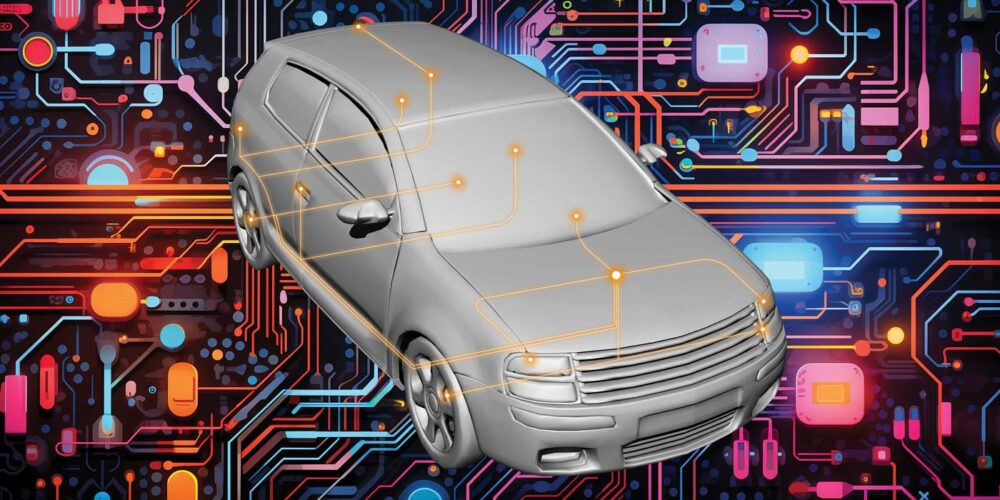One of the more difficult things about any technology is all the new terms you seem to get hit with, and in the automotive world, CAN bus was one of those terms. The second half, “bus,” was a term we had already used for many years, primarily as “bus bar.” A bus bar was a metal strip or bar that distributed power among multiple components.
In the automotive world, even when fiber-optic turn-signal indicators mounted on the front of a fender were as high-tech as it got, bus bars were inside many components such as fuse panels and relays, and sometimes under the hood for various engine electronics.
Then computer electronics took over. At first, we just had one electronic control unit (ECU) to deal with, and it was for the engine. Before you knew it, there was a transmission control unit, then the ABS control unit (not necessarily in that order). Wiring harnesses got bigger … and bigger and bigger.
Today, a car can have as many as 150 ECUs. In addition to the familiar engine, transmission, brake and airbag control units, doors, seats, mirrors, power steering, audio systems, cruise control, batteries and charging management systems all have their own control units. And as you can imagine, that’s just scratching the surface.
As technology was taking a ride with all these systems, engineers realized there were too many wires and too many sensors. There was no choice but to get aboard the CAN bus. CAN stands for controller area network, and a CAN bus, simply put, is a common communication line that can be used by all ECUs on the network.
The various control units on a modern vehicle need to communicate and share information over this network. Here’s an example of how and why. Years ago, when you turned on the air conditioning, a simple switch sent power to the compressor clutch. Today, the HVAC control module may need to communicate with the body control module (BCM) to notify it that A/C has been requested.
The BCM in turn sends a request to the engine control module (ECM) to “ask permission” if it can energize the A/C-compressor relay. The ECM looks at current engine operating parameters and sends a response signal to the BCM, which, in turn, sends a signal to the A/C relay.
The technological features on today’s cars are nothing short of impressive. Advanced driver-assistance systems (ADAS) include features such as adaptive cruise control, forward collision warnings, high-beam safety, lane-departure warnings, traffic-signal recognition, lane-keep assistance, automatic emergency braking and traction control.
All of the associated control units are in constant communication with each other, and since many of them must utilize information from the same sensors, through the CAN bus network this is possible. Instead of an ambient-temperature sensor for the ECM, the HVAC control unit and the instrument cluster, one sensor can share its data over the network.
Some high-end vehicles have a feature called automatic brake wiping, or brake disc wiping. This feature utilizes information from a rain sensor (also used by automatic windshield wipers) that’s sent over the CAN bus to the ABS control unit. In programmed intervals, the ABS control unit lightly applies the brakes in a manner that the driver won’t notice, to clear water and moisture away from the rotors and provide maximum braking when needed. All of this is only possible thanks to the communication available over the CAN bus.
Developing the CAN bus system was no simple feat, and it took many years to complete. The requirements for automotive CAN bus communication are standardized as part of the OBD II vehicle communication standard. There have been many changes over the years related to CAN communication, primarily affecting the speed and manner in which data is transmitted. The easiest way to think about it is to relate it to the changes over the years in USB design we’re all familiar with. It’s for the same reason. They transmit data quicker.
From a service standpoint, technicians have had to become familiar with CAN bus systems. U-codes that indicate a loss of communication between modules or on a specific bus are a tool designed to help technicians diagnose CAN bus problems.
Electrical wiring diagrams reflect the CAN bus network, and there are three different types of networks – loop, star and loop/star hybrid – referred to as CAN bus topology. Being able to recognize the type of topology can help a technician diagnose CAN bus errors quicker. In today’s world, we all have to get aboard the CAN bus.













